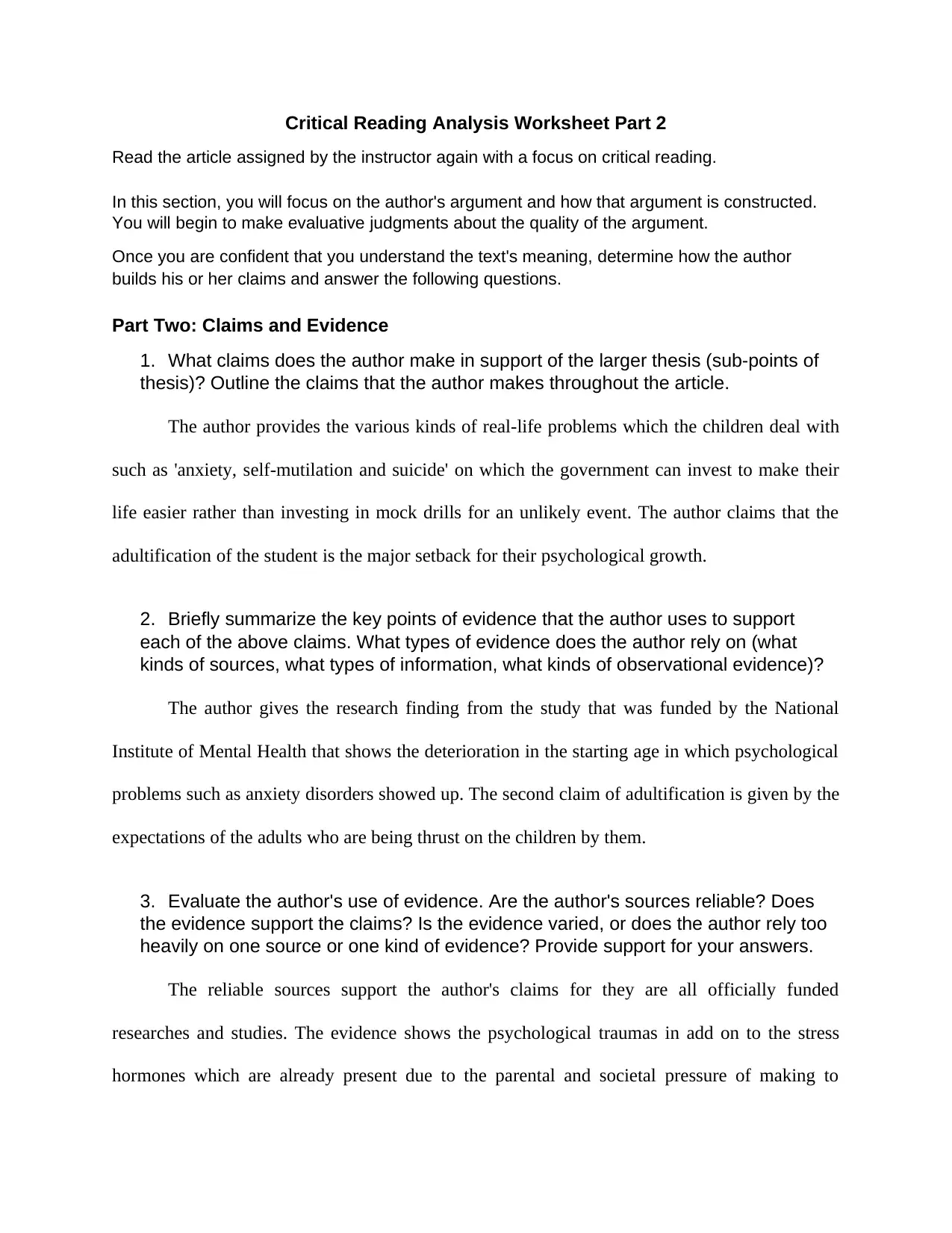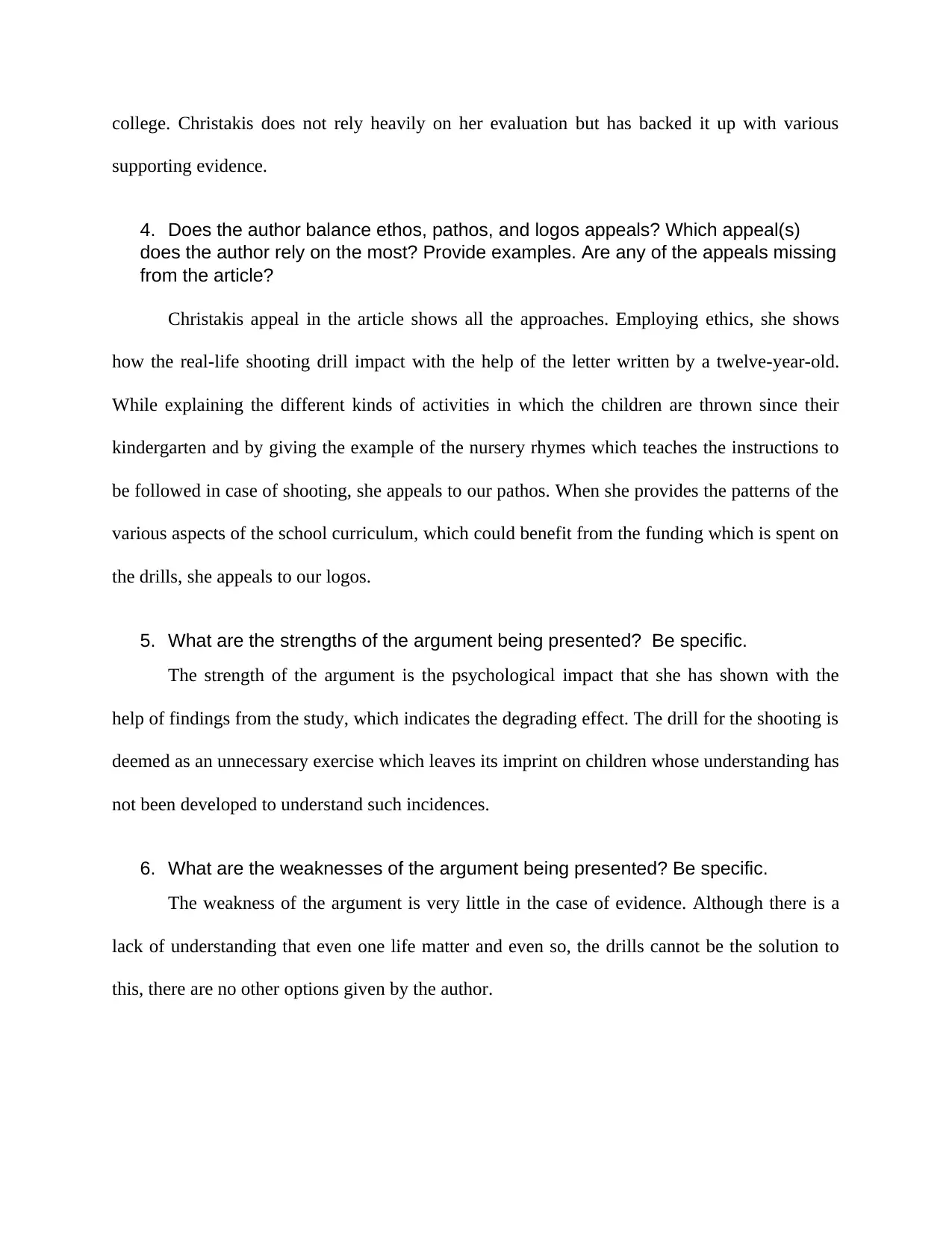Critical Reading Analysis: Evaluating Claims and Evidence
VerifiedAdded on 2022/08/12
|2
|689
|18
Homework Assignment
AI Summary
This assignment presents a critical reading analysis of an article, focusing on the author's argument, claims, and supporting evidence. The analysis begins by identifying the author's main claims, such as the negative impact of adultification on children and the ineffectiveness of school shooting drills, supported by research findings from the National Institute of Mental Health. The assignment evaluates the reliability of the author's sources and the strength of the evidence, including the use of ethos, pathos, and logos to persuade the reader. The strengths of the argument include the psychological impact of events, while the weaknesses include the lack of alternative solutions. The assignment seeks to evaluate the author's effectiveness in building an argument, citing evidence, and using rhetorical appeals.
1 out of 2







![[object Object]](/_next/static/media/star-bottom.7253800d.svg)